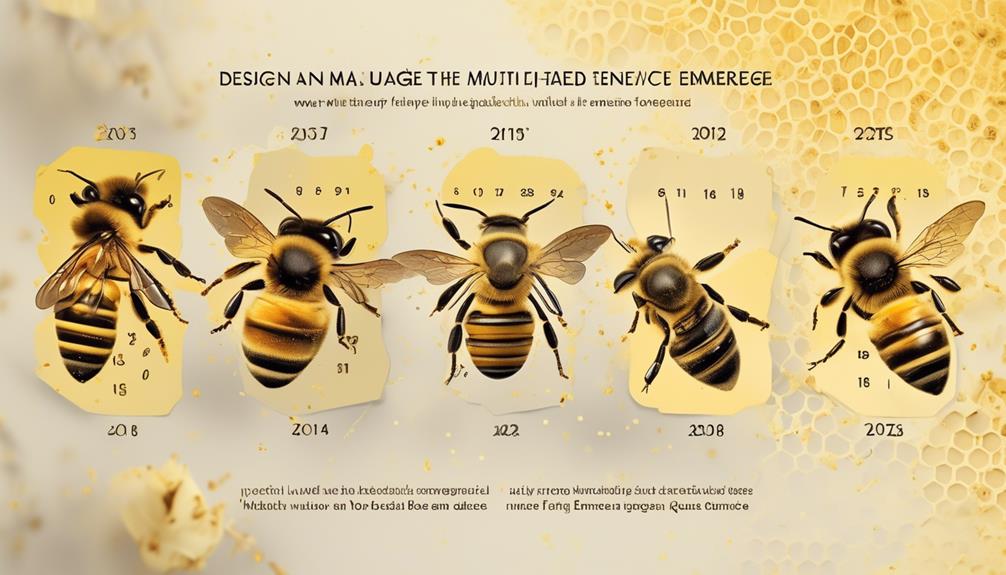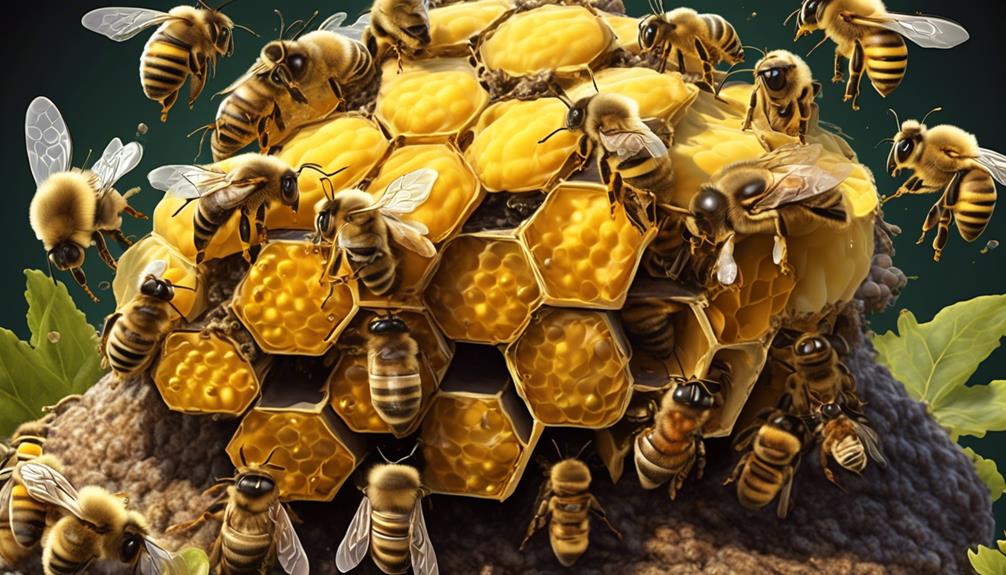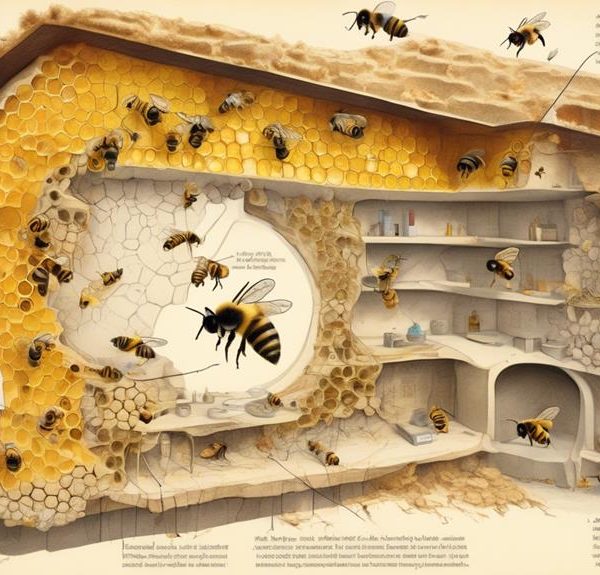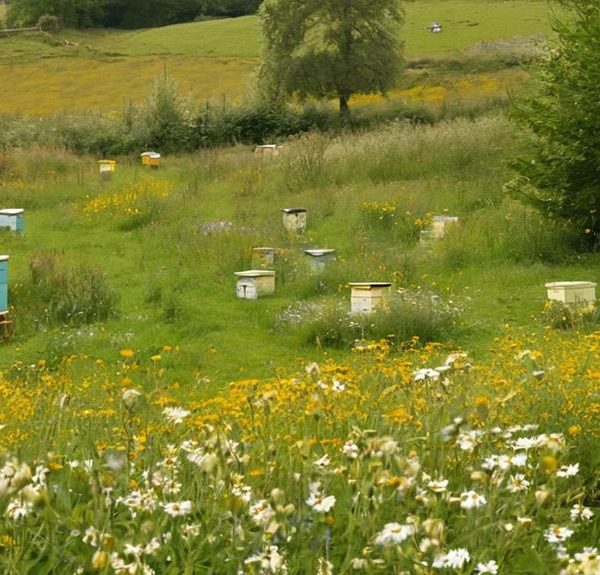Find out the fascinating factors dictating the rare birth of queen bees in a hive, a royal event not as common as you think.

How Often Are Queen Bees Born?
When the bees in your bonnet start buzzing about the birth of queens, you might be surprised to learn that it isn't an everyday occurrence.
The birth of a queen bee, a royal event in the hive, is a phenomenon dictated by several intriguing factors, such as the health of the colony, availability of resources, and the existing queen's productivity.
You'll find it fascinating to discover how often this regal emergence happens within the buzzing confines of a bee colony. But, while I can tell you it's not as frequent as you may think, I'll let you uncover the specific details for yourself in our subsequent discussion.
Key Takeaways
- Queen bees are born every two to five years.
- Factors such as the health and productivity of the current queen influence the emergence of a new queen.
- Worker bees play a crucial role in the birth of a new queen by selectively feeding chosen larvae royal jelly and eliminating other potential queens.
- The successful birth of a queen depends on the health of the colony, availability of resources, and suppression of new queen birth by existing queen pheromones.
The Lifecycle of a Queen Bee

While you may think that the queen bee's life is all about laying eggs, her lifecycle is actually a fascinating process that begins even before she hatches. It all starts when worker bees select a few special larvae to become potential queens. These lucky larvae are fed a diet of royal jelly, a substance secreted by the worker bees. This diet promotes the development of the larvae into queen bees.
When the queens hatch, they don't immediately take on their royal duties. Instead, they first have to defeat the other potential queens in a battle to the death. Only the strongest, fastest, and most resilient bee becomes the queen. Once she's established herself, she takes her maiden flight to mate with drones.
After mating, the queen bee returns to the hive to begin her egg-laying duties. She's capable of laying up to 2,000 eggs per day! This process continues until she can't produce as many eggs or if she dies. If that happens, a new queen takes over. The cycle is harsh, but it's nature's way of ensuring the strongest genes survive.
Understanding Bee Colony Dynamics

Diving into the world of bee colony dynamics, you'll find a complex social structure where every bee plays a crucial role in the hive's survival. At the heart of each colony is the queen bee, the only fertile female, responsible for laying all of the eggs. Worker bees, the sterile females, perform various tasks including foraging for food, cleaning the hive, and caring for the larvae. Male bees, or drones, exist solely to mate with a new queen.
Understanding the balance of this society is vital. The queen's pheromones regulate the colony's behavior and productivity. If she dies or her pheromone production diminishes, the colony can sense this change. Workers then begin to create new queens by feeding selected larvae a diet of royal jelly. It's a race against time as a hive without a queen for too long risks collapse.
Mirroring many social organisms, bee colonies illustrate a phenomenon known as 'division of labor'. Each bee has a specialized role, contributing to the colony's survival. The birth of a queen bee, therefore, is an intricate process deeply woven into the fabric of the hive's existence. Understanding this dynamic is key to appreciating these industrious creatures.
Factors Influencing Queen Bee Birth

Frequently, several factors come into play that influence the frequency and success of queen bee births. These factors include the health of the colony, the availability of resources, and the presence of existing queen pheromones.
Firstly, you should understand that the colony's health directly affects a queen's birth. A healthy colony with a high population of worker bees and ample food can support the development of a new queen. Diseased or stressed colonies, on the other hand, may be unable to rear a queen successfully.
Secondly, resources are crucial. Queen larvae require copious amounts of royal jelly, a substance produced by worker bees. If resources are scarce, worker bees can't produce enough royal jelly, impeding the birth of a queen.
Lastly, existing queen pheromones can suppress the development of new queens. The reigning queen releases these pheromones, which signal her presence to the colony. In her absence or when her pheromone production declines, the colony may initiate the birth of a new queen.
Frequency of Queen Bee Emergence

Understanding the frequency of queen bee emergence requires close observation of the hive, as it's not an everyday occurrence but rather a critical event linked to the colony's lifecycle and survival. Typically, a new queen emerges every two to five years, depending on factors like the current queen's health, productivity, and the availability of resources.
When the existing queen begins to falter in her duties, worker bees initiate the process of raising a new queen. They choose several young larvae and feed them a diet of royal jelly, a substance rich in proteins and vitamins. These selected larvae, housed in specially constructed cells, will develop into queen bees.
After approximately 16 days, a new queen emerges from her cell. However, it's not a guarantee she'll reign. Often, the first queen to emerge will seek out the other potential queens and eliminate them, ensuring her own survival. If two queens emerge simultaneously, they'll duel until only one remains.
Role of Worker Bees in Queen's Birth

While the birth and ascendance of a new queen bee is indeed a fascinating sequence, it's the worker bees who play an integral and often overlooked role in this intricate process. You see, when a colony senses the need for a new queen, due to the death, aging or decreased productivity of the current queen, it's the worker bees who kickstart the process.
They begin by selectively feeding chosen larvae a special diet of royal jelly, a nutrient-rich substance secreted from their glands. This diet is what differentiates a queen bee from a worker bee. While all larvae are initially fed this substance, only potential queens continue to receive it past the third day, enabling them to develop the necessary physical attributes to become a queen.
Once the new queen is born, the worker bees continue their vital role. They tend to the queen, feeding and grooming her until she's ready to take over the colony. Additionally, they kill any other potential queens, ensuring there are no threats to the new monarch.
This intricate sequence is a testament to the remarkable cooperation and division of labor within a bee colony, with the worker bees playing a fundamental role.
Frequently Asked Questions
What Is the Average Lifespan of a Queen Bee?"
You're curious about the lifespan of a queen bee, aren't you?
Well, on average, a queen bee lives for 3 to 4 years, although they can live up to 5 years.
In contrast, worker bees only live for a few weeks.
The queen's longevity is due to her diet of royal jelly, which is rich in nutrients.
However, if her egg-laying productivity decreases, she's often replaced by a new queen.
Quite a harsh reality, isn't it?
How Is the Queen Bee Recognized by Other Bees in the Colony?"
You're asking how the queen bee is recognized by her colony. It's primarily through her unique pheromones, or scent.
These pheromones regulate the behavior of the entire hive, from suppressing the workers' ability to lay eggs to attracting drones for mating.
Workers also spread these pheromones throughout the hive, which helps all the bees recognize their queen.
It's a fascinating, complex system of communication and control.
Do Queen Bees Ever Leave the Hive After Their Birth?"
Yes, queen bees do leave their hive after birth, but it's not a frequent occurrence.
After emerging, the queen will embark on a mating flight, returning to the hive to lay eggs for the rest of her life. If she's not successful on her first flight, she'll take additional ones.
However, once she's mated, she rarely leaves again, unless the colony decides to swarm and she must lead her worker bees to a new home.
What Is the Role of Drones in a Queen Bee's Life?"
Drones play a crucial role in a queen bee's life. They're the male bees, existing solely to mate with her. After mating, they die. It's a brief, one-time event, but vital for the colony's survival.
You might find it surprising, but a queen bee mates with several drones during her single mating flight. This ensures genetic diversity in the hive, strengthening the colony's chances of survival.
What Are the Consequences for the Colony if a Queen Bee Dies Prematurely?"
If a queen bee dies prematurely, you're facing a major problem. The colony can't survive without a queen. She's the only one who can lay fertilized eggs. Without her, there's no new generation of bees.
Worker bees will try to create a new queen by feeding royal jelly to a young larva. However, if they can't produce a viable queen, the colony will slowly die out.
It's a serious issue for beekeepers.
Conclusion
In conclusion, you've seen that queen bee births aren't random events. They're governed by the intricate dynamics of the bee colony, various environmental factors, and the crucial role of worker bees.
While it's hard to pinpoint an exact frequency, it's clear that a new queen emerges when required, ensuring the hive's survival.
So, the birth of a queen bee isn't just a rare, remarkable event but a testament to the fascinating intricacies of nature's design.


